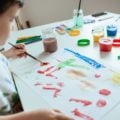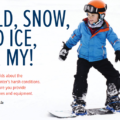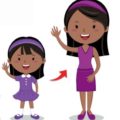When my son was in second grade, it became clear that he was struggling to read.
Despite the fact that he was curious, loved to learn and seemed truly interested in reading, he appeared to be in need of special education.
So he ended up in a special reading room.
Unfortunately, after several months, his reading skills did not improve.
Then it occurred to me: What if it’s his vision that’s holding him back?
As a special education teacher and tutor, I had learned about the importance of vision in student learning.
Experts estimate that 80 percent of learning occurs through the vision system.
So I took my son to a behavioral optometrist to see if his eyes were working appropriately.
Perhaps he had a learning-related vision problem?
He did!
After four months of vision therapy, my son was able to drop the special reading help, join his peers in the main classroom and move forward with his studies. He’s now entering his second year of Hamline University and doing very well.
Over the years, I’ve discussed the possibility of vision problems with parents, including many who later found that their children weren’t willfully avoiding reading, suffering from attention problems or in need of special education services.
They simply had vision problems that were getting in the way.
Indeed, I’ve seen real successes when students receive comprehensive eye exams and get the proper interventions with help from a behavioral or developmental optometrist.
Students who have been diagnosed with attention problems such as ADHD can demonstrate many of the same behaviors that a student with a learning-related vision problem might demonstrate.
Most schools don’t assess a student’s vision other than distance vision (the Snellen test). As a special education teacher, I’ve found that when the student’s distance vision is tested by a school nurse, it often comes out 20/20.
But having 20/20 distance vision doesn’t mean a student has all the vision skills needed to read.
Even with 20/20-vision students, I’ve learned to be particularly attentive to the following symptoms — complaints of headaches, rubbing eyes while reading, putting the head on a table while reading, covering one eye while reading or having a short attention span while reading.
According to the American Optometric Association, every child needs to possess the following vision skills for effective reading and learning:
- Visual acuity — the ability to see clearly in the distance for viewing the chalkboard, at an intermediate distance for the computer and up close for reading a book;
- Focusing — the ability to quickly and accurately maintain clear vision when the distance from objects change, such as when looking from the chalkboard to a paper on the desk (and back again, repeatedly).
- Teaming — the ability to use both eyes together when moving the eyes along a printed page (and to be able to judge distances and see depth for classwork and sports);
- Tracking — the ability to keep the eyes on target when looking from one object to another, moving the eyes along a printed page or following a moving object, such as a thrown ball;
- Hand-eye coordination — the ability to use visual information to direct the hands when drawing a picture or trying to hit a ball;
- Visual perception — the ability to organize images on a printed page into letters, words and ideas and to understand and remember what’s read.
If any of these visual skills are lacking or not functioning properly, a child will have to work harder. This can lead to headaches, fatigue and other eyestrain problems.
For more information on comprehensive eye exams, finding a behavioral optometrist and symptoms of learning-related vision problems, see covd.org or aoa.org.
Dana Flanders-Turman is a mother of two grown sons and a special education teacher who lives in St. Paul with her husband. For the past eight years, she has worked with members of the Minnesota State Legislature to help school districts address learning-related vision problems.























